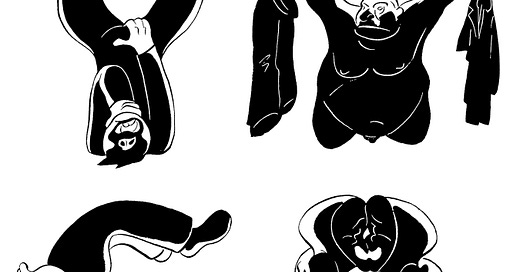From the debut issue of Apology Magazine, early 2013.
There is a weird postscript to this piece. On New Year’s Eve 1998, I took a bus from Providence to Manhattan to catch a show by Skull Kontrol, a band featuring my ex-bandmate Brooks and future bandmate Andy. After the show, I set out on the long journey to the Port Authority, only to discover that the entire city had temporarily descended into drunken chaos. I finally halted at 9th and 34th when I realized people were hurling full bottles and other deadly projectiles off Sloane House. I realized I did not want to die in front of this building, or in this city. I rushed back to the club and begged Skull Kontrol to take me on as an emergency roadie. We all spent the first night of 1999 camped out on the floor of Rick Froberg, who later illustrated this article. Andy & I became pals and later formed Wrangler Brutes with Brooks.
When New York’s Sloane House YMCA opened in the first year of the Great Depression, the word ‘transient’ wasn't yet a slur. Looming over 34th street, one lot inland from 9th avenue, the fourteen-story, quarter-million square-foot building housed thousands of servicemen before and after World War II. Rooms cost $1.30 a day. It was a cheap way to share a street with the glamour of Macy’s Herald Square and the Empire State Building.
This glamour evaporated in direct proportion to New York’s long slide under mayors Lindsay, Beame, and Koch. A fire in 1972 killed four residents. In 1978, the Village People transformed YMCA residency into a sleazy punchline. By the 1980s, Sloane House was a place penetrable by outsiders and ripe for assault, theft, rape, and suicide. Its closed central courtyard—‘the pit’—swelled with years’ worth of trash and smashed furniture, making the structure resemble a colossal garbage can. By its closing in 1993, only 20% of the building’s 1,400 rooms were occupied, and six of its 14 floors had been abandoned.
I can’t remember if I’d set foot in Sloane House before the day I moved in, in late 1989. I do know I was well aware of the building’s existence. The eerie geometry of midtown made 34th street a canyon of perfectly straight lines; even on the far east side, the building’s red neon fin shimmered as a beacon. The farther away you were, the more mysterious it seemed. Waiting for an elevator to ferry all my possessions up to my new home, I viewed the lobby as something quaintly and uniquely New York, like a Times Square novelty shop, or a stage set from The Wiz. Across a vast expanse of checkerboard linoleum, velvet ropes and stanchions cordoned off the front desk, perhaps mocking their own reputation as a glorified flop house. Nearby, several hardened street scums murmured to themselves. My dad stood next to me, holding a box. He turned slowly, with a diplomatic half-smile, and said, “Are you sure you want to do this?”
Keep reading with a 7-day free trial
Subscribe to Reality Breakdown to keep reading this post and get 7 days of free access to the full post archives.




